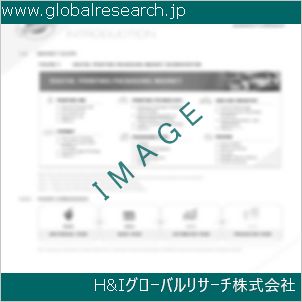Table of Contents
1 Industry Overview of Ethanolamine
1.1 Definition and Specifications of Ethanolamine
1.1.1 Definition of Ethanolamine
1.1.2 Specifications of Ethanolamine
1.2 Classification of Ethanolamine
1.3 Applications of Ethanolamine
1.3.1 Nuclear Application
1.3.2 Non-Nuclear Application
1.4 Industry Chain Structure of Ethanolamine
1.5 Industry Overview and Major Regions Status of Ethanolamine
1.5.1 Industry Overview of Ethanolamine
1.5.2 Global Major Regions Status of Ethanolamine
1.6 Industry Policy Analysis of Ethanolamine
1.7 Industry News Analysis of Ethanolamine
2 Manufacturing Cost Structure Analysis of Ethanolamine
2.1 Raw Material Suppliers and Price Analysis of Ethanolamine
2.2 Equipment Suppliers and Price Analysis of Ethanolamine
2.3 Labor Cost Analysis of Ethanolamine
2.4 Other Costs Analysis of Ethanolamine
2.5 Manufacturing Cost Structure Analysis of Ethanolamine
2.6 Manufacturing Process Analysis of Ethanolamine
3 Technical Data and Manufacturing Plants Analysis of Ethanolamine
3.1 Capacity and Commercial Production Date of Global Ethanolamine Major Manufacturers in 2023
3.2 Manufacturing Plants Distribution of Global Ethanolamine Major Manufacturers in 2023
3.3 R&D Status and Technology Source of Global Ethanolamine Major Manufacturers in 2023
3.4 Raw Materials Sources Analysis of Global Ethanolamine Major Manufacturers in 2023
4 Capacity, Production and Revenue Analysis of Ethanolamine by Regions, Types and Manufacturers
4.1 Global Capacity, Production and Revenue of Ethanolamine by Regions 2019-2024
4.2 Global and Major Regions Capacity, Production, Revenue and Growth Rate of Ethanolamine 2019-2024
4.3 Global Capacity, Production and Revenue of Ethanolamine by Types 2019-2024
4.4 Global Capacity, Production and Revenue of Ethanolamine by Manufacturers 2019-2024
5 Price, Cost, Gross and Gross Margin Analysis of Ethanolamine by Regions, Types and Manufacturers
5.1 Price, Cost, Gross and Gross Margin Analysis of Ethanolamine by Regions 2019-2024
5.2 Price, Cost, Gross and Gross Margin Analysis of Ethanolamine by Types 2019-2024
5.3 Price, Cost, Gross and Gross Margin Analysis of Ethanolamine by Manufacturers 2019-2024
6 Consumption Volume, Consumption Value and Sale Price Analysis of Ethanolamine by Regions, Types and Applications
6.1 Global Consumption Volume and Consumption Value of Ethanolamine by Regions 2019-2024
6.2 Global and Major Regions Consumption Volume, Consumption Value and Growth Rate of Ethanolamine 2019-2024
6.3 Global Consumption Volume and Consumption Value of Ethanolamine by Types 2019-2024
6.4 Global Consumption Volume and Consumption Value of Ethanolamine by Applications 2019-2024
6.5 Sale Price of Ethanolamine by Regions 2019-2024
6.6 Sale Price of Ethanolamine by Types 2019-2024
6.7 Sale Price of Ethanolamine by Applications 2019-2024
6.8 Market Share Analysis of Ethanolamine by Different Sale Price Levels
7 Supply, Import, Export and Consumption Analysis of Ethanolamine
7.1 Supply, Consumption and Gap of Ethanolamine 2019-2024
7.2 Global Capacity, Production, Price, Cost, Revenue, Supply, Import, Export and Consumption of Ethanolamine 2019-2024
7.3 USA Capacity, Production, Price, Cost, Revenue, Supply, Import, Export and Consumption of Ethanolamine 2019-2024
7.4 EU Capacity, Production, Price, Cost, Revenue, Supply, Import, Export and Consumption of Ethanolamine 2019-2024
7.5 China Capacity, Production, Price, Cost, Revenue, Supply, Import, Export and Consumption of Ethanolamine 2019-2024
7.6 Japan Capacity, Production, Price, Cost, Revenue, Supply, Import, Export and Consumption of Ethanolamine 2019-2024
8 Major Manufacturers Analysis of Ethanolamine
8.1 Manufacturer One
8.1.1 Company Profile
8.1.2 Product Picture and Specifications
8.1.2.1 Type I
8.1.2.2 Type II
8.1.2.3 Type III
8.1.3 Capacity, Production, Price, Cost, Gross and Revenue
8.1.4 Contact Information
8.2 Manufacturer Two
8.2.1 Company Profile
8.2.2 Product Picture and Specifications
8.2.2.1 Type I
8.2.2.2 Type II
8.2.2.3 Type III
8.2.3 Capacity, Production, Price, Cost, Gross and Revenue
8.2.4 Contact Information
8.3 Manufacturer Three
8.3.1 Company Profile
8.3.2 Product Picture and Specifications
8.3.2.1 Type I
8.3.2.2 Type II
8.3.2.3 Type III
8.3.3 Capacity, Production, Price, Cost, Gross and Revenue
8.3.4 Contact Information
8.4 Manufacturer Four
8.4.1 Company Profile
8.4.2 Product Picture and Specifications
8.4.2.1 Type I
8.4.2.2 Type II
8.4.2.3 Type III
8.4.3 Capacity, Production, Price, Cost, Gross and Revenue
8.4.4 Contact Information
8.5 Manufacturer Five
8.5.1 Company Profile
8.5.2 Product Picture and Specifications
8.5.2.1 Type I
8.5.2.2 Type II
8.5.2.3 Type III
8.5.3 Capacity, Production, Price, Cost, Gross and Revenue
8.5.4 Contact Information
…
9 Marketing Trader or Distributor Analysis of Ethanolamine
9.1 Marketing Channels Status of Ethanolamine
9.2 Traders or Distributors with Contact Information of Ethanolamine by Regions
9.3 Ex-work Price, Channel Price and End Buyer Price Analysis of Ethanolamine
9.4 Regional Import, Export and Trade Analysis of Ethanolamine
10 Industry Chain Analysis of Ethanolamine
10.1 Upstream Major Raw Materials Suppliers Analysis of Ethanolamine
10.1.1 Major Raw Materials Suppliers with Contact Information Analysis of Ethanolamine
10.1.2 Major Raw Materials Suppliers with Supply Volume Analysis of Ethanolamine by Regions
10.2 Upstream Major Equipment Suppliers Analysis of Ethanolamine
10.2.1 Major Equipment Suppliers with Contact Information Analysis of Ethanolamine
10.2.2 Major Equipment Suppliers with Product Pictures Analysis of Ethanolamine by Regions
10.3 Downstream Major Consumers Analysis of Ethanolamine
10.3.1 Major Consumers with Contact Information Analysis of Ethanolamine
10.3.2 Major Consumers with Consumption Volume Analysis of Ethanolamine by Regions
10.4 Supply Chain Relationship Analysis of Ethanolamine
11 Development Trend of Analysis of Ethanolamine
11.1 Capacity, Production and Revenue Forecast of Ethanolamine by Regions and Types
11.1.1 Global Capacity, Production and Revenue of Ethanolamine by Regions 2024-2029
11.1.2 Global and Major Regions Capacity, Production, Revenue and Growth Rate of Ethanolamine 2024-2029
11.1.3 Global Capacity, Production and Revenue of Ethanolamine by Types 2024-2029
11.2 Consumption Volume and Consumption Value Forecast of Ethanolamine by Regions, Types and Applications
11.2.1 Global Consumption Volume and Consumption Value of Ethanolamine by Regions 2024-2029
11.2.2 Global and Major Regions Consumption Volume, Consumption Value and Growth Rate of Ethanolamine 2024-2029
11.2.3 Global Consumption Volume and Consumption Value of Ethanolamine by Types 2024-2029
11.2.4 Global Consumption Volume and Consumption Value of Ethanolamine by Applications 2024-2029
11.3 Supply, Import, Export and Consumption Forecast of Ethanolamine
11.3.1 Supply, Consumption and Gap of Ethanolamine 2024-2029
11.3.2 Global Capacity, Production, Price, Cost, Revenue, Supply, Import, Export and Consumption of Ethanolamine 2024-2029
11.3.3 USA Capacity, Production, Price, Cost, Revenue, Supply, Import, Export and Consumption of Ethanolamine 2024-2029
11.3.4 EU Capacity, Production, Price, Cost, Revenue, Supply, Import, Export and Consumption of Ethanolamine 2024-2029
11.3.5 China Capacity, Production, Price, Cost, Revenue, Supply, Import, Export and Consumption of Ethanolamine 2024-2029
11.3.6 Japan Capacity, Production, Price, Cost, Revenue, Supply, Import, Export and Consumption of Ethanolamine 2024-2029
12 New Project Investment Feasibility Analysis of Ethanolamine
12.1 New Project SWOT Analysis of Ethanolamine
12.2 New Project Investment Feasibility Analysis of Ethanolamine
13 Conclusion of the Global Ethanolamine (CAS 141-43-5) Industry 2024 Market Research Report
| ※参考情報 エタノールアミンは、化学式C2H7NOを持つ有機化合物であり、CAS番号141-43-5として知られています。この化合物は、アミンとアルコールの特性を併せ持つ、無色の透明な液体です。エタノールアミンは、アミノアルコールの一種で、基礎的な化学構造により、さまざまな用途で広く利用されています。 エタノールアミンの主な特徴は、親水性が高く、極性のある化合物であることです。このため、水溶性があり、さまざまな反応において触媒や反応剤として機能します。また、エタノールアミンは、アミノ基を持つため、さまざまな化合物と反応しやすく、化学合成に利用される場面が多いです。そのため、研究開発や工業的な用途において、重要な役割を果たしています。 エタノールアミンにはいくつかの種類がありますが、主に二つの異性体があります。一つはモノエタノールアミン(MEA)で、もう一つはジエタノールアミン(DEA)です。モノエタノールアミンは、エタノールアミンの中で最も一般的な形態であり、工業的な用途が多く見られます。一方、ジエタノールアミンは、より多くのアミノ基を持ち、特定の化学反応や合成過程において利用されます。 エタノールアミンの用途は非常に多岐にわたります。まず、工業用途としては、農薬や医薬品の製造において重要な中間体として使用されます。例えば、農業分野では、殺虫剤や除草剤の合成に利用されており、作物の生産性を向上させるために欠かせない要素となっています。また、医薬品分野においても、エタノールアミンは多くの医薬品の合成や、製剤に利用されています。 さらに、エタノールアミンは、界面活性剤や乳化剤としても広く使用されています。この特性により、化粧品や洗剤、さらには工業用の清浄剤など、さまざまな製品に利用されています。界面活性剤としての機能は、油脂と水の界面での安定化を助けるため、特に洗浄効果を高める役割があります。 また、エタノールアミンは、酸の中和にも使用されます。これは、化学工場や石油精製所において酸性の廃水や排ガスを中和し、環境への影響を軽減するための重要なステップです。特に、脱硫プロセスにおいては、エタノールアミンを使用して硫黄酸化物を除去する技術が広く採用されています。 関連技術においては、エタノールアミンを利用した新しい合成手法や応用が研究されています。例えば、ナノ材料の合成やコーティング技術において、エタノールアミンが重要な役割を果たすことが報告されています。また、環境に優しい材料やプロセスに関する研究も進められており、持続可能な社会の構築に向けた取り組みが行われています。 エタノールアミンは、その用途の広さから、多くの産業において重要な役割を果たしていますが、その取扱いには注意が必要です。エタノールアミンは、刺激性のある物質であり、高濃度では皮膚や呼吸器に対して有害な影響を及ぼすことがあります。そのため、適切な安全対策を講じて使用することが求められています。特に工業現場では、適切な換気や個人防護具の着用が必要です。 今後、エタノールアミンに関する研究や技術開発は続けられることでしょう。新たな応用や環境への配慮が求められる中で、エタノールアミンの役割はさらなる進化を遂げる可能性があります。これにより、持続可能な化学プロセスや製品の開発に寄与することが期待されます。 以上のように、エタノールアミンはその特性や諸用途から、非常に重要な化学物質であり、多くの分野で広く活用されています。その特性を理解し、安全に取り扱うことが今後の鍵となるでしょう。エタノールアミンの性質や用途を深く知ることで、より効果的な利用方法や新たな発展の可能性を見出すことができると考えられます。 |
❖ 免責事項 ❖
http://www.globalresearch.jp/disclaimer

-gr.jpg)










